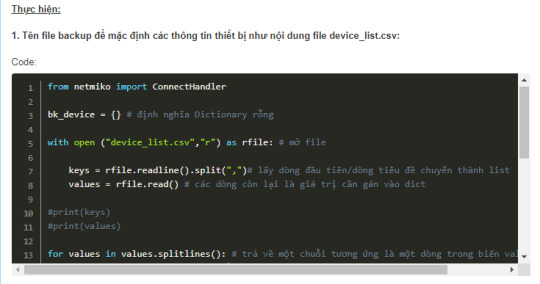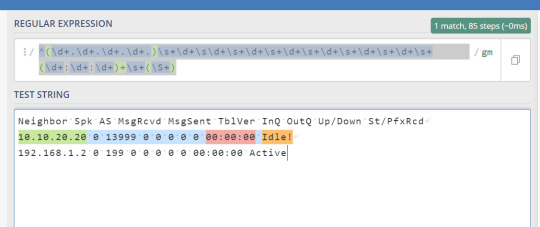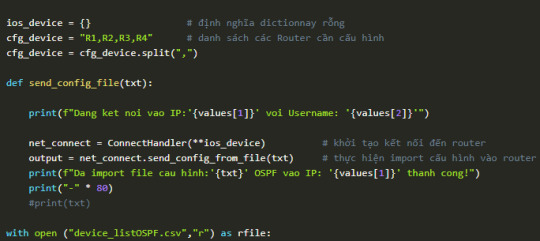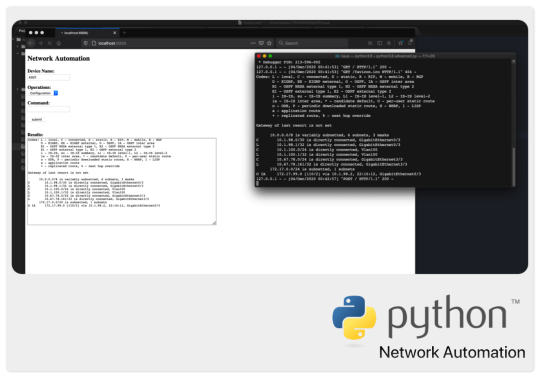#netmiko
Explore tagged Tumblr posts
Text
Ağ Mühendisliği ve IT Eğitimlerinde Uzman Rehber: Orhanergun.net'in Sundukları
Dijital Çağın BT Profesyonellerine Armağanı
Günümüzün hızla dijitalleşen dünyasında, ağ mühendisliği ve IT alanındaki uzmanlık her geçen gün daha kritik hale geliyor. Orhanergun.net, bu dinamik sektörde kariyer hedefleyenler ve bilgilerini güncellemek isteyen profesyoneller için benzersiz bir kaynak olarak öne çıkıyor. Platform, sadece teorik bilgiler sunmakla kalmıyor, aynı zamanda gerçek dünya uygulamaları ve stratejik beceriler kazandırmayı hedefliyor.
Orhanergun.net'in Uzmanlık Alanları
1. Cisco Sertifikasyonları ve Ağ Mimarisi
Platformun en güçlü yanlarından biri, Cisco'nun prestijli sertifikasyonlarına hazırlık için sunduğu kapsamlı içerikler:
CCDE (Cisco Certified Design Expert): Sektörde altın standart kabul edilen bu sertifika için detaylı rehberler
CCNP/CCIE: İleri düzey ağ uzmanlığı yolculuğunda adım adım ilerleme metodolojileri
Gerçek Cihaz Deneyimi: Sanal simülasyonların ötesinde, fiziksel cihazlarla çalışma fırsatları
2. Ağ Sanallaştırma ve Modern Teknolojiler
Günümüz veri merkezlerinin olmazsa olmazı haline gelen konular:
VXLAN ve BGP EVPN uygulamaları
SD-WAN çözümleri ve optimizasyon teknikleri
Bulut tabanlı ağ altyapılarının yönetimi
3. Ağ Otomasyonu ve Programlama
Geleneksel yöntemlerin yerini alan modern yaklaşımlar:
Python Netmiko ile ağ cihazlarının otomasyonu
Ansible playbook'larının pratik uygulamaları
API tabanlı ağ yönetimi teknikleri
4. Siber Güvenlik ve Ağ Savunma Stratejileri
Siber tehditlere karşı proaktif çözümler:
Ağ penetrasyon testleri
Zero Trust mimarisi uygulamaları
Güvenlik duvarı optimizasyon teknikleri
Orhanergun.net'in Fark Yaratan Özellikleri
Uygulamalı Öğrenme Deneyimi
Canlı laboratuvar ortamları ile gerçek senaryolar
Case study'ler üzerinden iş dünyasına hazırlık
Sürekli güncellenen müfredatlar
Kariyer Gelişim Desteği
CV hazırlama ve mülakat teknikleri
Sektör trendlerine uyumlu beceri geliştirme
Network otomasyonu gibi geleceğin yetkinlikleri
Topluluk ve Destek Sistemi
Uzman eğitmenlerle birebir etkileşim
Öğrenci forumları ve bilgi paylaşım platformu
Kariyer danışmanlığı hizmetleri
Neden Orhanergun.net Tercih Edilmeli?
Sektör Deneyimi: Eğitmenler aktif olarak sektörde çalışıyor
Pratik Odaklılık: Teoriden çok uygulamaya yönelik içerikler
Güncellik: Teknolojik gelişmelere paralel müfredat
Kapsamlı Kaynak: Tek bir platformda tüm ihtiyaçların karşılanması
Sonuç: BT Kariyeriniz İçin Doğru Adres
Orhanergun.net, ağ mühendisliği ve IT alanında kendini geliştirmek isteyenler için:
✔ Sektör ihtiyaçlarına uygun içerikler ✔ Uygulamalı öğrenme fırsatları ✔ Kariyer gelişim desteği
sunuyor. Teknoloji dünyasının hızla değişen dinamiklerine ayak uydurmak isteyen her profesyonel için bu platform, bilgiye ulaşmanın en etkili yollarından birini sunuyor.
Hemen keşfetmek için: Orhanergun.net
0 notes
Text
Why Network Engineers Should Learn Python: A Comprehensive Guide
Python has emerged as a valuable tool for network engineers, transforming the way networks are managed and maintained. Its simplicity, versatility, and powerful libraries make it an ideal programming language for automating tasks, improving network performance, and enhancing security. Here’s why Python has become essential for network engineers and how it can benefit their careers.
Considering the kind support of Python Course in Chennai Whatever your level of experience or reason for switching from another programming language, learning Python gets much more fun.

Automating Repetitive Network Tasks
One of the biggest advantages of Python for network engineers is automation. Tasks like configuring routers and switches, monitoring traffic, and collecting logs can be automated using Python scripts. This not only saves time but also reduces the risk of human error. Libraries like Netmiko and Paramiko make it easy to connect to network devices and execute commands automatically, streamlining daily operations.
Improving Network Monitoring and Troubleshooting
Python enables real-time monitoring and analysis of network performance. Engineers can create scripts that gather data from network devices, analyze patterns, and generate alerts when issues arise. This helps in quickly identifying and resolving problems, improving overall network reliability. Python-based tools can also help in predicting potential failures and ensuring smooth network operations.
Simplifying Configuration Management
Managing network devices manually can be time-consuming and prone to errors. Python allows engineers to automate configuration updates across multiple devices simultaneously. This ensures consistency, reduces downtime, and makes it easier to manage complex network environments. Automation tools like Ansible, which are built on Python, further simplify the process of managing large-scale networks.
Enhancing Security and Compliance
Network security is critical for any organization. Python enables engineers to automate security checks, scan for vulnerabilities, and monitor network traffic for suspicious activity. Engineers can write scripts to update firewall rules, check for unauthorized access, and ensure compliance with security protocols. This helps strengthen the overall security posture of the network. With the aid of Best Online Training & Placement Programs, which offer comprehensive training and job placement support to anyone looking to develop their talents, it’s easier to learn this tool and advance your career.

Data Analysis and Reporting
Python’s data analysis libraries, such as Pandas and NumPy, make it easy to process and analyze large volumes of network data. Engineers can create scripts to track network performance, identify bottlenecks, and generate detailed reports. Visualization tools like Matplotlib and Seaborn allow engineers to present data insights clearly, helping stakeholders make informed decisions.
Integrating with APIs and Cloud Services
Modern networks rely heavily on APIs for managing cloud-based infrastructure and software-defined networks (SDN). Python’s compatibility with REST APIs allows engineers to automate communication between different platforms and services. This makes it easier to manage cloud networks, automate updates, and integrate with third-party tools.
Career Growth and Industry Demand
Python skills are in high demand in the networking industry. As more companies adopt automation and network programmability, engineers with Python expertise are well-positioned for career advancement. Mastering Python opens up new opportunities in network design, cybersecurity, and cloud networking, giving engineers a competitive edge in the job market.
Conclusion
Python has become a must-have skill for network engineers. Its ability to automate tasks, analyze data, improve security, and integrate with modern network infrastructure makes it an essential tool in today’s networking landscape. Learning Python not only enhances an engineer's technical capabilities but also boosts career prospects in the ever-evolving field of network engineering.
#python course#python training#python#python programming#python online course#python online training#python certification#python online classes#technology#tech
0 notes
Text
Python Code Quality Automation: Enhancing Network Automation, Pandas Training, and Pytest for Networking
Python has become one of the most widely used programming languages across various domains, from web development to data science, automation, and even network management. In the realm of network automation, Python plays a pivotal role, offering robust tools and libraries that streamline tasks, enhance workflows, and improve overall efficiency. This article will delve into several key areas where Python enhances network automation, including Python Code Quality Automation, Python Network Automation Courses, Python Pandas Training for Networks, and Python for network engineers.

Python Code Quality Automation: Ensuring Clean, Efficient Code
In any development environment, code quality is paramount. Poorly written code can lead to bugs, inefficiencies, and security vulnerabilities. In network automation, where the complexity of tasks is high, ensuring that code is well-written, maintainable, and efficient is critical. Python code quality automation tools are indispensable in this process.
Python offers several tools that help automate the process of checking and enforcing code quality:
Linters: Tools like Pylint and Flake8 are designed to analyze Python code for potential errors, style violations, and complexity issues. These tools can automatically flag problems such as unused variables, improper indentation, and potential logic errors. By automating this process, developers save time and ensure their code adheres to best practices, especially in network automation projects where reliability is key.
Formatters: Python's Black formatter can automatically format code to adhere to a consistent style. This is particularly useful in network automation projects that involve collaboration among multiple developers. Consistent formatting helps improve readability, making it easier for teams to collaborate and troubleshoot issues.
Static Analysis: Tools like Pyflakes and Mypy help detect errors in code without executing it, which is especially useful in network automation scripts that may interface with critical network infrastructure. These tools can catch issues like type mismatches and undeclared variables, preventing bugs before they even occur.
By automating code quality checks, developers can ensure that their network automation scripts are not only functional but also robust and maintainable.
Python Network Automation Courses: Learning the Essentials
As network infrastructures become more complex, traditional manual configuration and troubleshooting methods are no longer sustainable. Python network automation courses are essential for network engineers and developers who want to streamline their workflow and enhance their capabilities.
A typical Python network automation course will cover several core areas:
Network Programming with Python: Students will learn how to interact with network devices (routers, switches, firewall) using Python. This involves using libraries like Netmiko and NAPALM to automate common tasks such as configuring devices, fetching device statuses, and running diagnostics. By automating these tasks, network engineers can reduce human error and increase efficiency.
APIs and Network Automation: Modern network devices often provide RESTful APIs that allow Python scripts to interact directly with network equipment. Learning to work with these APIs is a key aspect of network automation training. Students will gain hands-on experience in sending API requests to network devices, retrieving information, and performing configuration changes.
Ansible and Python: Ansible is a popular automation tool that can work seamlessly with Python. Many courses incorporate learning how to use Python in conjunction with Ansible to automate more complex network tasks, such as managing configurations across multiple devices or orchestrating network changes in response to certain triggers.
Error Handling and Debugging: Effective network automation also involves being able to handle errors gracefully. Training often covers best practices in error handling, troubleshooting, and debugging automated scripts to ensure network automation tasks run smoothly.
By investing time in a Python quality assurance training, professionals can learn how to automate tasks such as device configuration, performance monitoring, and fault detection, transforming the way they manage network infrastructure.
Python Pandas Training for Networks: Leveraging Data in Network Automation
Network management and troubleshooting often generate large amounts of data, from performance metrics to logs, traffic analysis, and more. This is where Python Pandas comes into play. Pandas is a powerful library for data manipulation and analysis, making it ideal for processing the complex data generated by network systems.
Network engineers can benefit from Python Pandas training in the following ways:
Log Analysis: Network devices typically generate vast amounts of log data, which can be overwhelming to manually sift through. Pandas allows engineers to load log files into dataframes, where they can filter, clean, and analyze the data with ease. This makes it much easier to pinpoint issues such as security breaches, network slowdowns, or device malfunctions.
Traffic Analysis: Pandas can be used to analyze network traffic data, such as bandwidth usage, latency, and packet loss. By importing raw data into Pandas, engineers can create visualizations, perform trend analysis, and gain insights into network performance, helping them make informed decisions about optimization.
Automation Reporting: For network automation tasks, Python Pandas can be used to automate the generation of reports based on real-time network data. This is especially useful for network monitoring and creating dashboards that track performance metrics or incidents over time.
By gaining Python Pandas training, network professionals can not only automate network management tasks but also gain deeper insights into their network’s behavior, helping them make data-driven decisions and improve performance.
Python Pytest for Networking: Automated Testing in Network Automation
One of the most critical aspects of network automation is ensuring that scripts and configurations are working as intended. This is where Python Pytest for networking becomes invaluable. Pytest is a popular testing framework in Python that allows developers to write simple yet powerful tests for their code.
In network automation, Pytest can be used for:
Unit Testing Network Scripts: Before deploying a network automation script, it’s essential to ensure that the code works as expected. Pytest allows engineers to write unit tests that simulate different network scenarios, such as testing device configurations or verifying the output of a network diagnostic command.
Integration Testing with Real Devices: Pytest can also be used for integration testing. Network automation scripts often interact with multiple devices and services, and Pytest allows developers to test the entire system by simulating interactions with real network devices. This helps identify issues before they affect production networks.
Regression Testing: After making changes to network automation scripts, it’s important to ensure that the new changes don’t break existing functionality. Pytest can be used to run regression tests, ensuring that previously functioning parts of the system continue to work as expected.
By incorporating Pytest for networking into their workflow, network engineers can ensure that their automation solutions are reliable and resilient.
Conclusion
Python is a game-changer in the world of network automation. With tools for ensuring code quality, resources for learning network automation, data manipulation with Pandas, and testing capabilities with Pytest, Python enables network engineers to automate complex tasks, enhance efficiency, and improve the quality of their network management processes. Whether you're an aspiring network automation professional or an experienced engineer looking to expand your skill set, diving into Python’s capabilities in network automation is a step toward transforming your approach to network management.
For More Info:-
automate configs with Jinja2
automate data transformation
automate network configs with Scrapli
0 notes
Text
Network Autonation - Backup Cisco Configuration To TFTP



1 note
·
View note
Video
youtube
In this video, I want to provide a preview for one of my custom network automation projected I have developed (and deployed) into a few customer environments.
This custom appliance utilizes a web frontend with a Python framework backend and a Mongo Database along with job FIFO queuing for all automation tasks. Many of these jobs consisting of tasks, templates, reports to workflows.
You can get more details at: https://www.routehub.net/automation
And you can connect with me (and view my complete background experience) at: https://www.linkedin.com/in/ccie6778/
#netdevops#python#devnet#networkautomation#ansible#cisconso#netmiko#napalm#developer#networkdeveloper
1 note
·
View note
Text
Ease in Automation: Convert Router Output to Json Format
Ease in Automation: Convert Router Output to Json Format
In this article we will be talking about converting the output from Cisco XR into a Json File for further utilization or automation. The following code can be used and can be redesigned to work with several other commands and output in other variants of Cisco XE, XR etc., as well as other vendor devices. Requirements: > Python3 > Netmiko > TextFSM > Json Netmiko library is one of the most useful…

View On WordPress
#automating outputs to json#cisco netmiko XR#cisco XR#CiscoXE#converting output from router to json#IOS#json#multi-list to json#netmiko#regex usage in cisco XR#show bgp summary#textfsm#textfsm usage#textfsm usgae#XE#XR
0 notes
Text
Netmiko Network Config Change - OSPF Multiple Areas


0 notes
Photo

Python Programming for Network Engineers: Cisco, Netmiko ++ ☞ http://bit.ly/2WdSMua #python #programming
2 notes
·
View notes
Photo

Python Programming for Network Engineers: Cisco, Netmiko ++ ☞ http://bit.ly/2WdSMua #python #programming
1 note
·
View note
Link
Nowadays Devnet or Devops has become very popular. Using Python in general or netmiko for ssh in particular has become extremely important in the networking industry. However, very few articles talk about netmiko support for Nokia’s SROS. Today I will show you some basic ways to approach Netmiko using Python to process data on Nokia SROS, the first step to becoming Devops.
0 notes
Text
Netmiko Script to change history buffer size for current termial session
from netmiko import ConnectHandler net_connect = ConnectHandler(device_type = 'cisco_ios', host='131.226.217.143', username='developer',password ='C1sco12345') output = net_connect.send_command("show terminal | include History") print('Current history buffer ') print(output) print() print('Changing the history buffer size to 9.....') net_connect.send_command("terminal history size 9") output = net_connect.send_command("show terminal | include History") print(output)
#ccna#ccna certification#ccna training#ccna cisco ccnp networkengineer ccie networking cybersecurity network technology training linux security ciscocert it datacenter ipv network#cisco ccna#ccie#ccie certification#ine ccnp workbook#ccnp#ccnp course
0 notes
Text
Top Network Automation Tools You Need to Know in 2025
In today’s rapidly evolving IT landscape, network automation is more crucial than ever. With the complexity of modern networks continuing to grow, organizations are turning to automation tools to improve efficiency, reduce human error, and streamline operations. If you’re looking to stay ahead of the curve in 2025, knowing the top network automation tools is a must. From programming languages like Python to specialized tools like PyATS and Nornir, the right toolkit can significantly enhance your ability to manage and test networks. Let’s explore the most essential network automation tools you should know in 2025.

Network Automation with Go
Go, also known as Golang, is a statically typed, compiled programming language created by Google. While Go has traditionally been used for building scalable systems, it has also gained traction in the network automation space. One of Go’s main advantages is its simplicity and speed, making it an ideal choice for high-performance network automation tasks.
In 2025, Go is expected to be widely adopted for automating network tasks such as configuration management, device monitoring, and log processing. Due to its concurrency features, Go enables network engineers to write fast and efficient scripts for handling multiple devices at once, making it especially useful in large-scale environments.
Why Go?
Fast execution and performance.
Great for concurrent tasks, ideal for managing multiple devices.
Growing community and support in networking.
If you're already comfortable with languages like Python or Bash, learning Go could give you an edge in network automation. With a growing ecosystem of libraries such as gopacket (for network packet processing), Go is increasingly becoming a tool of choice for network automation developers.
Network Automation with Nornir
Nornir is a robust Python-based automation framework specifically designed for network engineers. Unlike other automation tools, Nornir emphasizes concurrency and flexibility, making it well-suited for large-scale network automation tasks. It allows users to manage network devices using YAML-based inventory files and supports plugins for various tasks like network configuration, device interaction, and inventory management.
One of Nornir's strengths is its ability to work seamlessly with other Python libraries, such as netmiko and napalm, to enhance network automation capabilities. With its unique parallelism model, Nornir can automate repetitive network tasks across hundreds or thousands of devices simultaneously.
Why Nornir?
Built with network engineers in mind.
Flexible and extensible, with numerous community plugins.
High-performance concurrent tasks.
For network engineers looking to automate tasks like device configuration, firmware upgrades, and backup management, Nornir is one of the best tools available in 2025. With a strong Python foundation, it’s also a great option if you already use Python for other networking tasks.
Network Automation with Python
Python has long been the go-to language for network automation, and in 2025, it remains a dominant force in the field. Python’s simplicity, readability, and vast ecosystem of libraries make it an ideal language for automating network tasks such as configuration management, device interaction, and monitoring.
Some of the most widely used Python libraries for network automation include:
Netmiko: A Python library that simplifies SSH connections to network devices. It’s commonly used for automating configuration changes on Cisco, Juniper, and other devices.
Napalm: A Python-based automation tool designed to abstract vendor-specific configurations, allowing for uniform automation tasks across different network devices.
PySNMP: Useful for SNMP-based network monitoring and management.
Python’s rich ecosystem and broad community support mean that whether you’re working with firewalls, routers, or switches, there’s a Python library for almost every task in network automation.
Why Python?
Simple, readable code that’s easy to maintain.
Large library ecosystem tailored for network automation.
Extensive community support and resources.
In 2025, Python will continue to be the backbone of network automation, with use cases ranging from device configuration and monitoring to advanced analytics and troubleshooting.
Network Testing with PyATS
PyATS (Python Automation Test System) is a network testing framework developed by Cisco that is designed for automating the validation and verification of network devices. It’s particularly popular for network testing in large-scale, multi-vendor environments and helps network engineers and DevOps teams automate their test scripts to ensure network reliability.
With PyATS, you can easily create test scripts that validate the network performance and configuration of devices, enabling you to catch issues before they affect production environments. It supports both real-time and offline testing, making it a flexible choice for any network.
Why PyATS?
Comprehensive test scripting for network device validation.
Works well in multi-vendor environments.
Excellent for network performance validation and verification.
For network engineers who need to validate configurations, troubleshoot issues, or ensure that new code doesn’t break existing setups, PyATS will be an essential tool in 2025.
Network Testing with Pytest
While PyATS is tailored for network automation, Pytest is a more general-purpose testing framework that can also be used for network testing. Pytest is a powerful, open-source testing framework that can be used to write simple unit tests or complex functional tests, and it works exceptionally well with Python-based network automation tools.
For example, when used alongside libraries like Netmiko or Napalm, Pytest can help you automate the process of validating network device configurations, running performance tests, and checking for common errors in your network’s state.
Why Pytest?
Versatile testing framework compatible with network libraries.
Easy to integrate with other Python-based tools.
Well-suited for both unit and integration testing.
As more network professionals start adopting continuous integration (CI) and continuous delivery (CD) methodologies, Pytest will play an important role in ensuring that network devices and automation scripts are working as intended.
Network Validation with Batfish
Network validation tools are crucial to ensuring that network configurations are error-free and that the network is performing optimally. Batfish is an open-source network validation tool that allows network engineers to simulate and verify network configurations without making changes to live networks. It provides an extensive set of validation checks and can analyze complex network setups by modeling the network behavior before deployment.
Batfish supports a wide variety of networking protocols and is compatible with multiple device vendors, making it an ideal tool for large, diverse network environments. Whether you’re verifying routing configurations, checking network policies, or simulating traffic flow, Batfish offers a comprehensive solution.
Why Batfish?
Powerful simulation and validation for large-scale networks.
Vendor-agnostic and supports multi-vendor environments.
Helps reduce configuration errors before deployment.
In 2025, Batfish will remain a go-to tool for network engineers looking to ensure that their network configurations are both secure and reliable before deployment.
Conclusion
Network automation in 2025 is all about efficiency, reliability, and speed. The right tools can help network engineers simplify complex tasks, reduce errors, and improve network performance. Whether you're using Python, Go, Nornir, or tools like PyATS and Batfish, each offers unique features to automate, test, and validate network operations. By incorporating these tools into your workflow, you’ll be better equipped to handle the demands of modern network environments and stay ahead in the field of network automation.
For More Info:-
JSON validation tool
learn Python networking
Network automation membership
1 note
·
View note
Photo

Python Programming for Network Engineers: Cisco, Netmiko ++ ☞ http://bit.ly/2BZrFvw #Programming #python
3 notes
·
View notes
Photo

Python Programming for Network Engineers: Cisco, Netmiko ++ ☞ http://on.learn4startup.com/HkgXXaKfOX #python
1 note
·
View note
Text
NETWORK AUTOMATION USING PYTHON

In this course, you will learn how to setup Network Automation using several Python libraries step-by-step on a Cisco network topology. You will learn how to perform Network Automation using the NETMIKO, PYNTC, and NORNIR Python libraries. You will learn how to view the configuration, routing table, interfaces, and other ‘show’ commands on a network device. To even how to push network configuration to a network device among other topics in this course.
https://www.routehub.net/course/network-automation/
0 notes
Text
Python Network Programming for Huawei devices
Python Network Programming for Huawei devices
Python Network Programming for Huawei devices Use Netmiko and Napalm Libraries for Python 3 to build Network automated tasks for Huawei devices What you’ll study The best way to set up python3.6 on Ubuntu linux The best way to set up totally different community libraries for python 3.6 comparable to Netmiko and Napalm The best way to use python3 community libraries for Huawei Routers Construct…

View On WordPress
0 notes